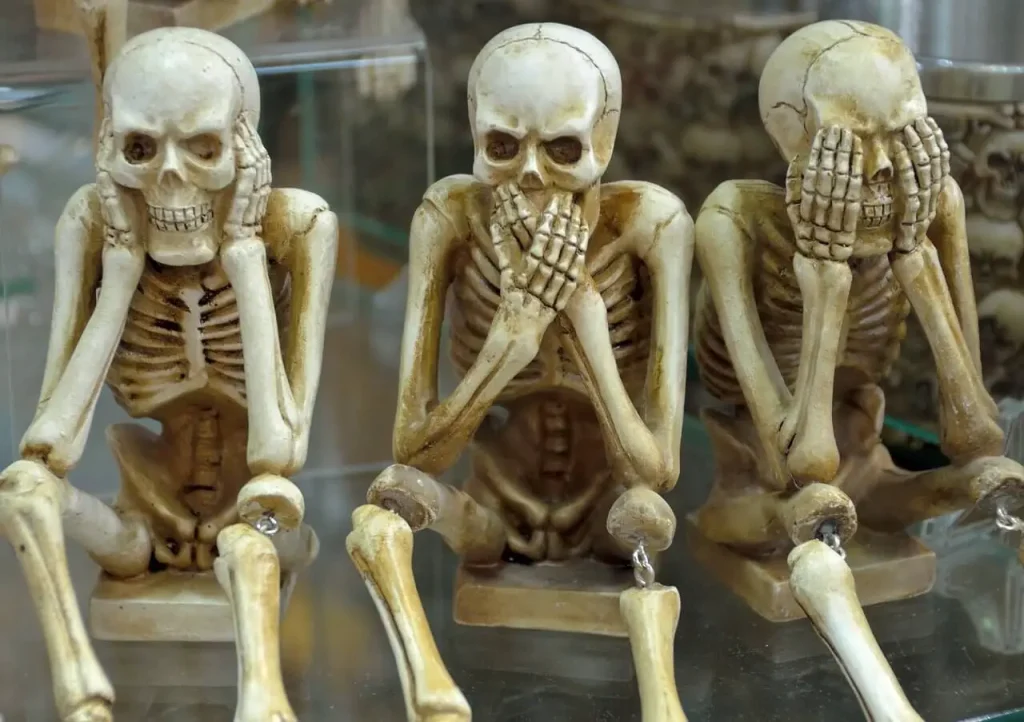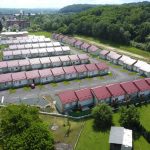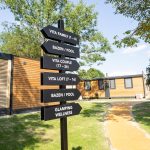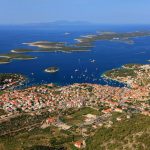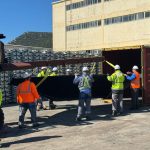As Šibenikski reports, after the discovery of medieval graves under the stone paving on the route of the Šibenik Agglomeration in January this year, when the sewerage works stopped for a while until under the supervision of archaeologists and conservators from the ancient cemetery near the monastery more than 600 skulls have been excavated, a similar thing happened these days, about twenty meters away from the January find.
Namely, the Šibenik utility company ‘Zeleni grad’ last Thursday ordered a small excavator to dig a shallow trench on the lawn near the monastery walls to install an automatic irrigation system, but human bones appeared under the bucket of the machine, only 30 centimeters deep.
The lawn on the land owned by the monastery is much higher than the sidewalk. Few would go for it if, unfortunately, so upside down, the bones did not stand for seven days while Fr. Ivan Penava, a pastor in Vidica and monk of the monastery of St. Frane, did not send an e-mail to the media on Thursday night with photos and information.
Suddenly, headlines on the portals screamed eerie descriptions of ‘dogs scattering human bones through the city,’ although Penava did not explicitly state this in his notice. However, Fr. Ivan also subtly touched on this possibility:
“We also met passers-by who take their dogs for a walk there, and when we asked them if they knew they were human bones on the lawn, they were surprised. When the ‘Zeleni grad’ return the cemetery to its original condition and bury the human bones of our old Šibenik citizens find out.” – Fr. Ivan wrote in his press release.
It seems that this was necessary to move to the ‘Zeleni grad,’ since this morning, with the help of the ‘Čempresa’ workers, the bones scattered on the lawn were first collected and soon returned to the ground, in agreement with Fr. Ivan Bradarić, the guardian of the monastery of St. Frane.
Novica Ljubičić, director of Zeleni grad, said that the company had given up installing an irrigation system and that its workers would continue to maintain the green area by hand, precisely because of the bones that lay there.
According to Ljubičić, ‘Zeleni grad’ did not react after the media. Still, a few days before the media bombing on Friday, he was in contact with the guardian, the municipal department of the City of Šibenik, and Željko Krnčević, the director of the Šibenik City Museum. And as for the bombastic inscriptions, he replied that they were mere exaggerations.
“Nothing like that happened. We returned everything as it was. The bones that we did not know were lying there will be covered with grass again”, said Ljubičič, and Fr. Ivan Bradarić confirmed his words.
“Yes, quite a strange situation. They were confused, and we don’t know where those bones came from and whether they had anything to do with the cemetery discovered recently near the church. In general, we have concluded that we will return everything to its original state”, said Fr. Ivan Bradarić briefly.
There seems to be no need to archaeologically examine the bones as that location has already been explored back in 1971-1972., under the supervision of the late Šibenik archaeologist Zlatko Gunjača, adding what is known to most Šibenik: every day we walk through the graves of ancestors in the part of the Old Town around the monastery of St. Frane. In the Middle Ages, richer people from Šibenik and friars were buried within the monastery walls, in the church, and the yard and the last resting places of the common people were in the immediate vicinity until the 1820s and the founding of the cemetery of St. Ana under the fortress of St. Mihovila.
For more about news in Croatia, follow TCN’s dedicated page.

